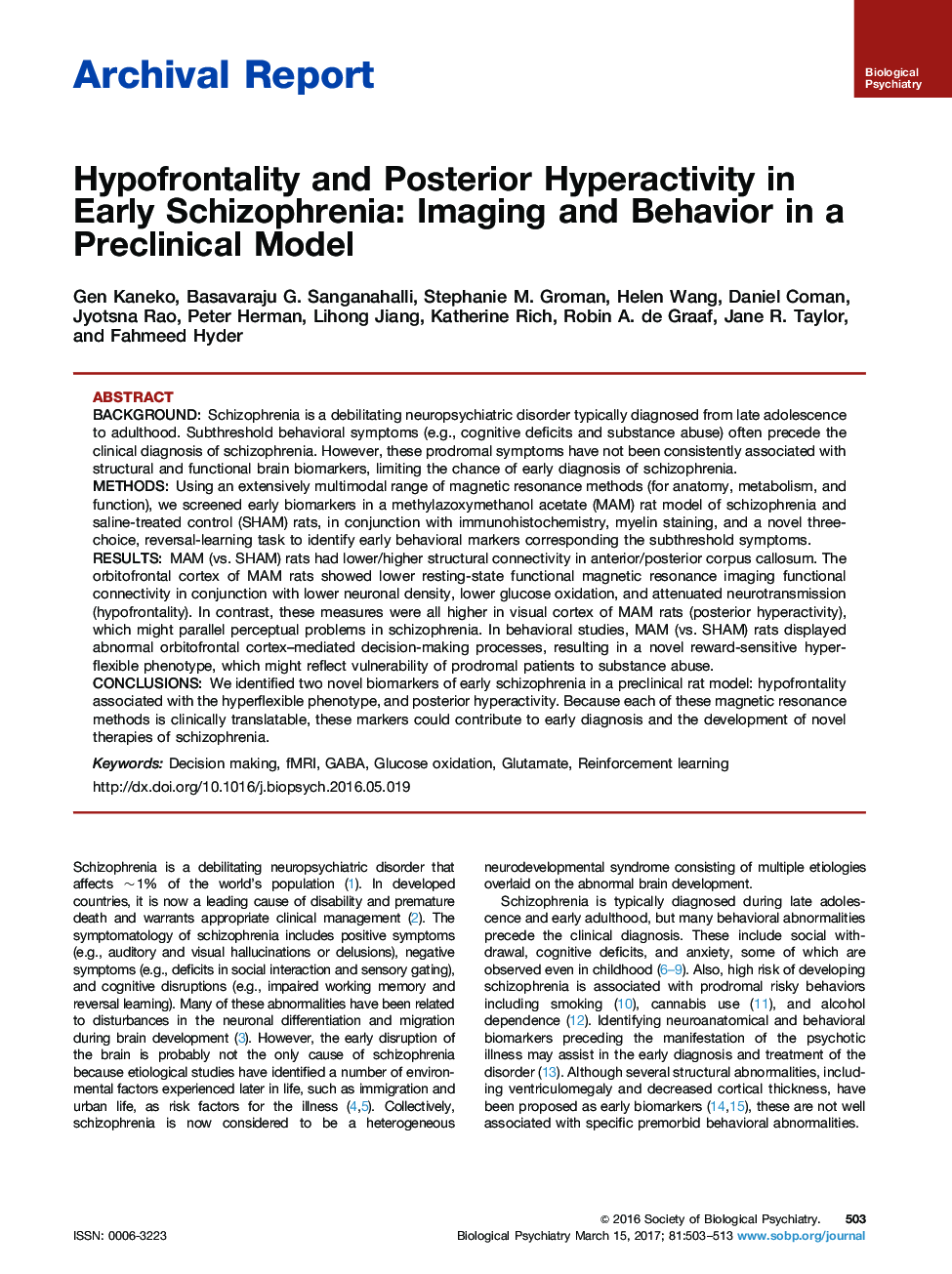| Article ID | Journal | Published Year | Pages | File Type |
|---|---|---|---|---|
| 5720757 | Biological Psychiatry | 2017 | 11 Pages |
BackgroundSchizophrenia is a debilitating neuropsychiatric disorder typically diagnosed from late adolescence to adulthood. Subthreshold behavioral symptoms (e.g., cognitive deficits and substance abuse) often precede the clinical diagnosis of schizophrenia. However, these prodromal symptoms have not been consistently associated with structural and functional brain biomarkers, limiting the chance of early diagnosis of schizophrenia.MethodsUsing an extensively multimodal range of magnetic resonance methods (for anatomy, metabolism, and function), we screened early biomarkers in a methylazoxymethanol acetate (MAM) rat model of schizophrenia and saline-treated control (SHAM) rats, in conjunction with immunohistochemistry, myelin staining, and a novel three-choice, reversal-learning task to identify early behavioral markers corresponding the subthreshold symptoms.ResultsMAM (vs. SHAM) rats had lower/higher structural connectivity in anterior/posterior corpus callosum. The orbitofrontal cortex of MAM rats showed lower resting-state functional magnetic resonance imaging functional connectivity in conjunction with lower neuronal density, lower glucose oxidation, and attenuated neurotransmission (hypofrontality). In contrast, these measures were all higher in visual cortex of MAM rats (posterior hyperactivity), which might parallel perceptual problems in schizophrenia. In behavioral studies, MAM (vs. SHAM) rats displayed abnormal orbitofrontal cortex-mediated decision-making processes, resulting in a novel reward-sensitive hyperflexible phenotype, which might reflect vulnerability of prodromal patients to substance abuse.ConclusionsWe identified two novel biomarkers of early schizophrenia in a preclinical rat model: hypofrontality associated with the hyperflexible phenotype, and posterior hyperactivity. Because each of these magnetic resonance methods is clinically translatable, these markers could contribute to early diagnosis and the development of novel therapies of schizophrenia.
